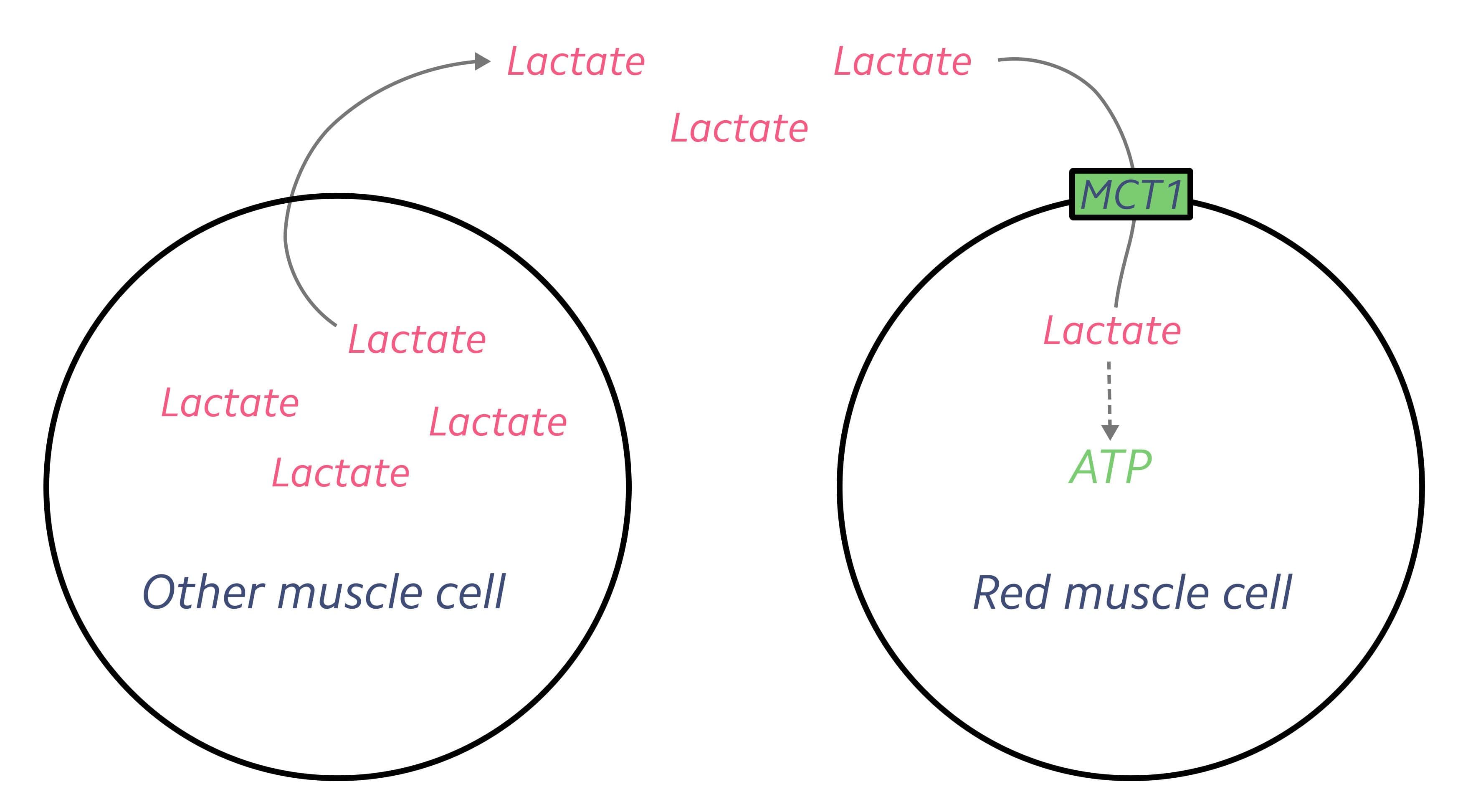Feel the burn: This gene may affect how you feel during a workout

Have you ever wondered what causes the “burn” during exercise? Burning sensations during exercise are caused, in part, by the buildup of lactic acid, a metabolic byproduct of sugar breakdown in cells. The regulation of lactic acid has multiple important roles in muscle function and may impact a person’s athleticism. Genetics—specifically, heritable changes in the MCT1 gene—can play a role in this regulatory process.
Muscles need oxygen and sugar (among other things) in order to function. Both molecules are consumed in a process that breaks down sugar and produces a molecule called ATP. ATP—which is fundamental to transferring energy in all living things—helps many processes in human biology, including muscle contraction. The sugar breakdown process produces ATP through two different stages: glycolysis and oxidative phosphorylation1.
- Glycolysis is the first step in this process and is capable of generating small amounts (2 ATP molecules per sugar molecule1) of energy, very quickly. The byproducts produced during glycolysis can then go on to the TCA cycle.
- Oxidative phosphorylation is a process were significantly more energy is produced from the sugar metabolites (36 ATP molecules per sugar molecule1). This form of energy production can only occur when there is oxygen available.
During intense workouts, this energy production pipeline can be changed in order to meet the energetic needs of a muscle. For instance, oxygen in the muscle is quickly depleted during a workout; this prevents cells from using oxidative phosphorylation and forces them to use glycolysis for fast, oxygen independent production of ATP2. When this happens, lactate—a form of lactic acid and a metabolic byproduct—begins to build up. Too much lactate can contribute to muscle fatigue, and to a person “feeling the burn.”

Too much lactate can contribute to “feeling the burn”
Though it is a byproduct, lactic acid serves beneficial functions in muscle cells. Like sugar, lactate can be used to produce ATP in certain muscle cells, known as red muscle cells. Because of this, those cells have developed a mechanism for bringing lactate into the cell through a specialized protein known as MCT1. This protein is a membrane bound transporter, which means that it can be found in the outer membrane of some cells, and it helps transport molecules from one side of the cell membrane to the other. This particular transporter is selective, meaning it only transports specific types of molecules. MCT1 moves lactate into the cell, an important function that allows lactate to be broken down and used for ATP production1.
Genetic studies have shown that some people inherit a version of MCT1 in which one base pair is changed (from a T to an A). This base change has been associated with a person’s likelihood of being an elite athlete1. One study examining these athletes showed that people who have inherited the “T” version of MCT1 are more likely to be elite sprinters3, while another study suggested that those with the “A” version are more likely to be elite endurance athletes1. It has been shown that individuals who inherit the “T” allele have a 35-40% slower rate of lactate transport following an intense workout, but whether this affects athleticism is unknown4.
There are many genes associated with athleticism, but an individual’s life choices can have a much larger impact. Genes are not deterministic, which means that you can overcome genetic predispositions in some situations. Pursue the exercises that make you happy—and as you do, remember that MCT1 may be playing a role in how those workouts make you feel.


1Lunt, Sophia Y., and Matthew G. Vander Heiden. “Aerobic Glycolysis: Meeting the Metabolic Requirements of Cell Proliferation.” Annual Review of Cell and Developmental Biology, vol. 27, no. 1, Oct. 2011, pp. 441–464., doi:10.1146/annurev-cellbio-092910-154237. Web. 5 Dec. 2017.
2Fedotovskaya, Olga N. “A Common Polymorphism of the MCT1 Gene and Athletic Performance.” International Journal of Sports Physiology and Performance, vol. 9, no. 1, 9 Jan. 2014, pp. 173–180., doi:10.1123/ijspp.2013-0026. Web. 5 Dec. 2017.
3Sawczuk, Marek, et al. “MCT1 A1470T: A novel polymorphism for sprint performance?” Journal of Science and Medicine in Sport, vol. 18, no. 1, Jan. 2015, pp. 114–118., doi:10.1016/j.jsams.2013.12.008.
4Kikuchi, N., et al. “The Association Between MCT1 T1470A Polymorphism and Power-Oriented Athletic Performance.” International Journal of Sports Medicine, vol. 38, no. 01, Mar. 2016, pp. 76–80., doi:10.1055/s-0042-117113.